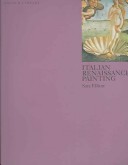Colour Plate Books
4 total works
The introductory essay by Keith Roberts, has been revised and enlarged with 48 full-page colour plates, notes and black-and-white comparative illustrations by Christopher Brown, who is Chief Curator of the National Gallery, London.
Despite the popularity of his work, Edgar Degas (1834-1917) has remained one of the most elusive of the Impressionists and Post-Impressionists. To his contemporaries he was always a very private man, rather aloof, self-absorbed and inclined to cynicism. However, few could fault his skill as an artist, and his acute vision, mastery of design, and meticulous attention to often ignored detail single him out as one of the most important figures in nineteenth-century art history. The ballet, the racecourse and women at their toilet were his three favourite subjects and he returned to them again and again in the course of his long career, never feeling that he had exhausted these themes. Degas never forgot his early academic sketches to his late pastels the quality of his drawings never faltered.
In this excellent introduction by Keith Roberts, Dr Helen Langdon has added the notes to the plates and numerous black-and-white comparative illustrations.
The Italian Renaissance was an unparalleled era of creativity, particularly in the field of painting. Building on the achievements of artists such as Giotto in the fourteenth century and Masacio and Donatello in the fifteenth centuries, and culminating in the careers of the undisputed geniuses Leonardo de Vinci, Michelangelo, Raphael and Titian, the period witnessed the rediscovery of naturalistic techniques in art and new interest in portraiture, landscapes and themes from classical mythology. This imaginative richness produced some of the most enduring images in all art history, many of which are reproduced here in a perfect introduction to a unique age.
Art historian Sara Elliott has produced a lively and wide-ranging account of this great era of Western civilization, including extensive captions to each colour plate and many invaluable comparative illustrations.


